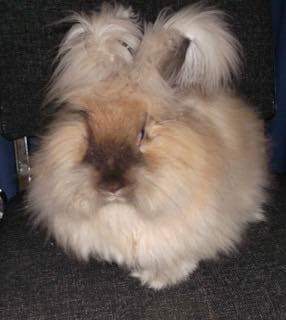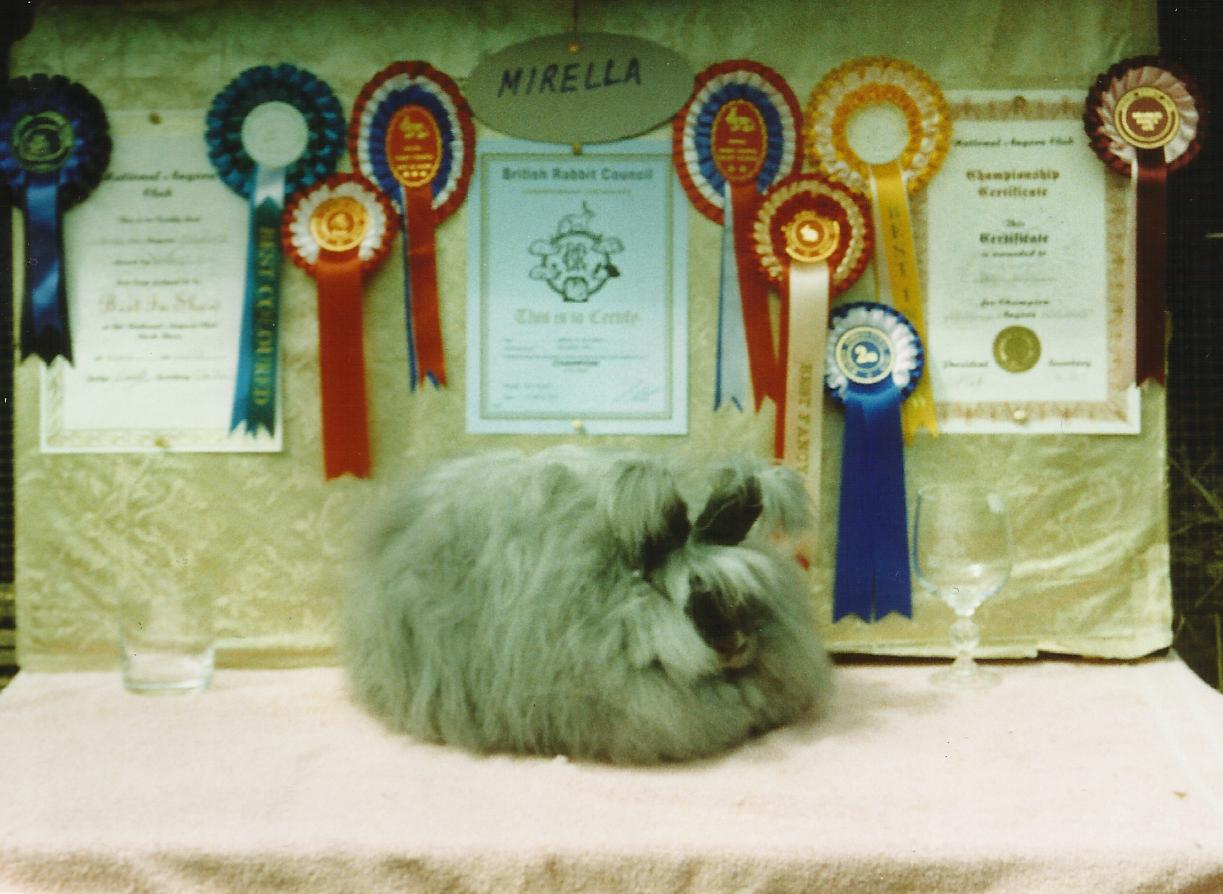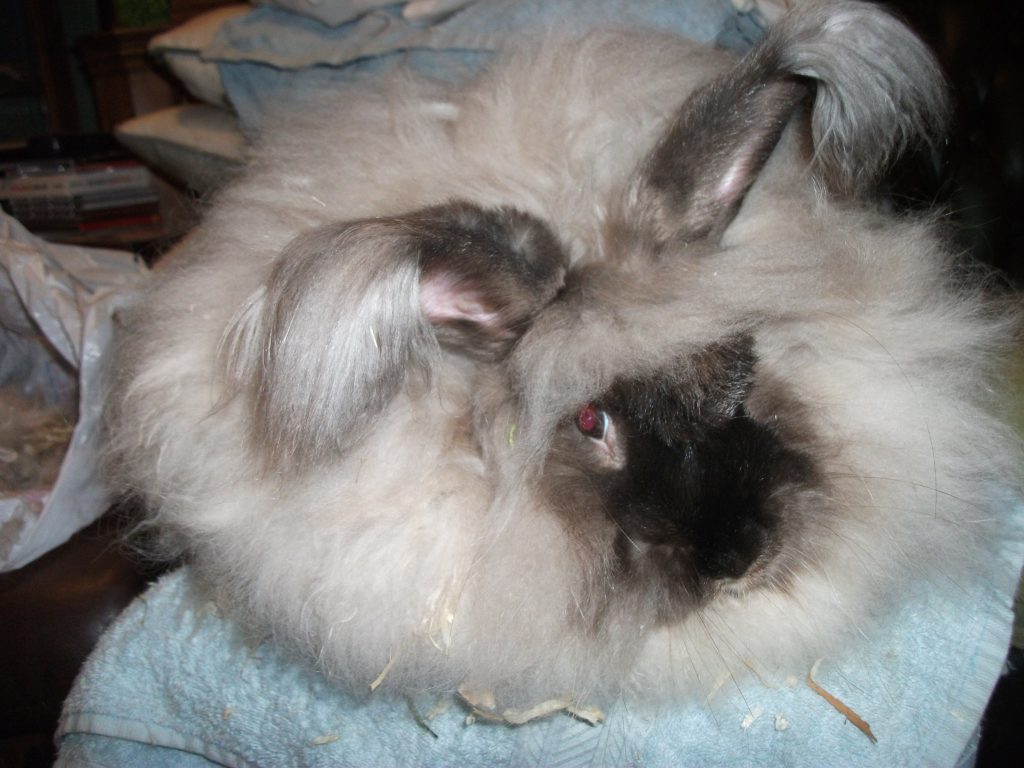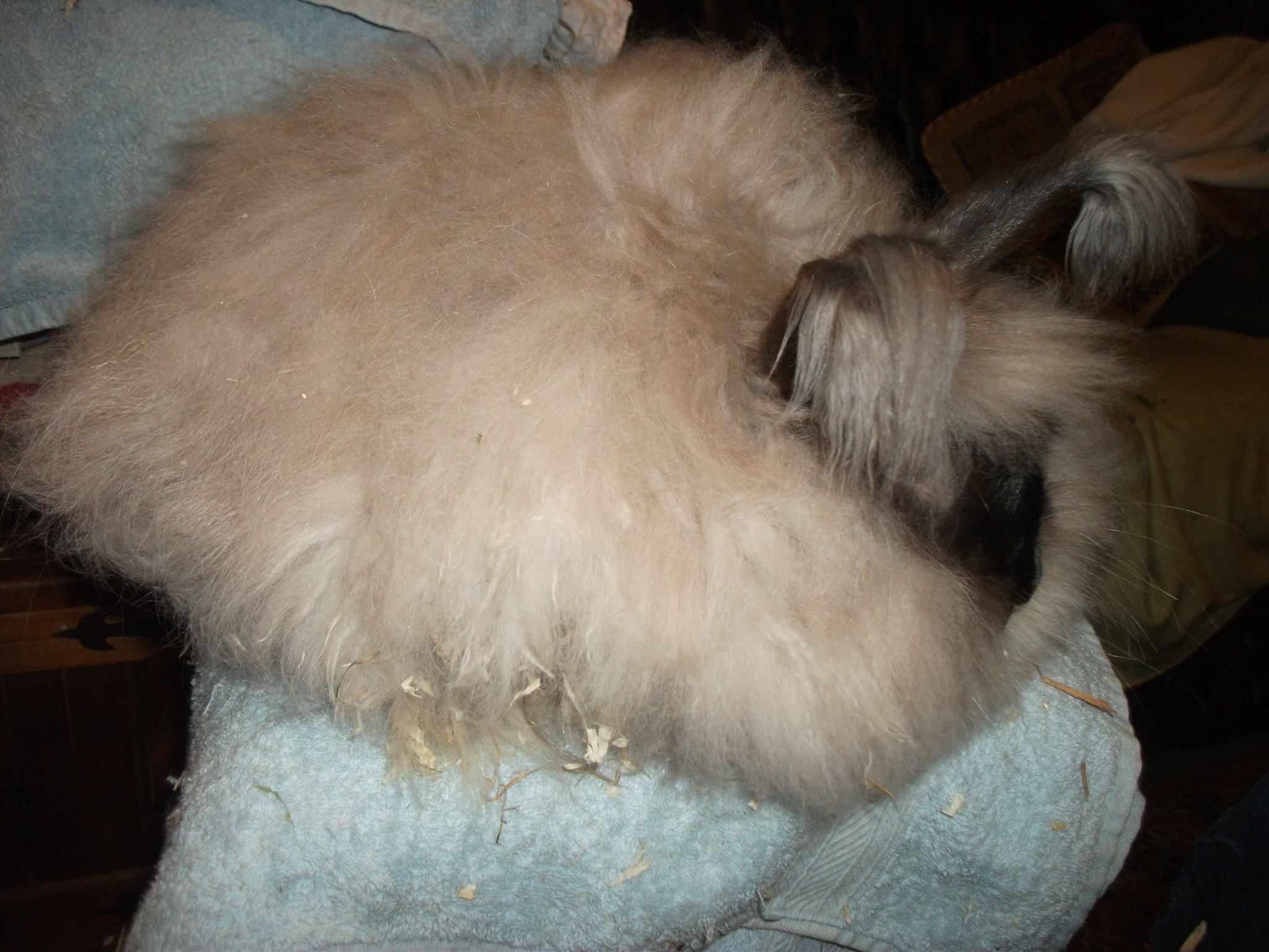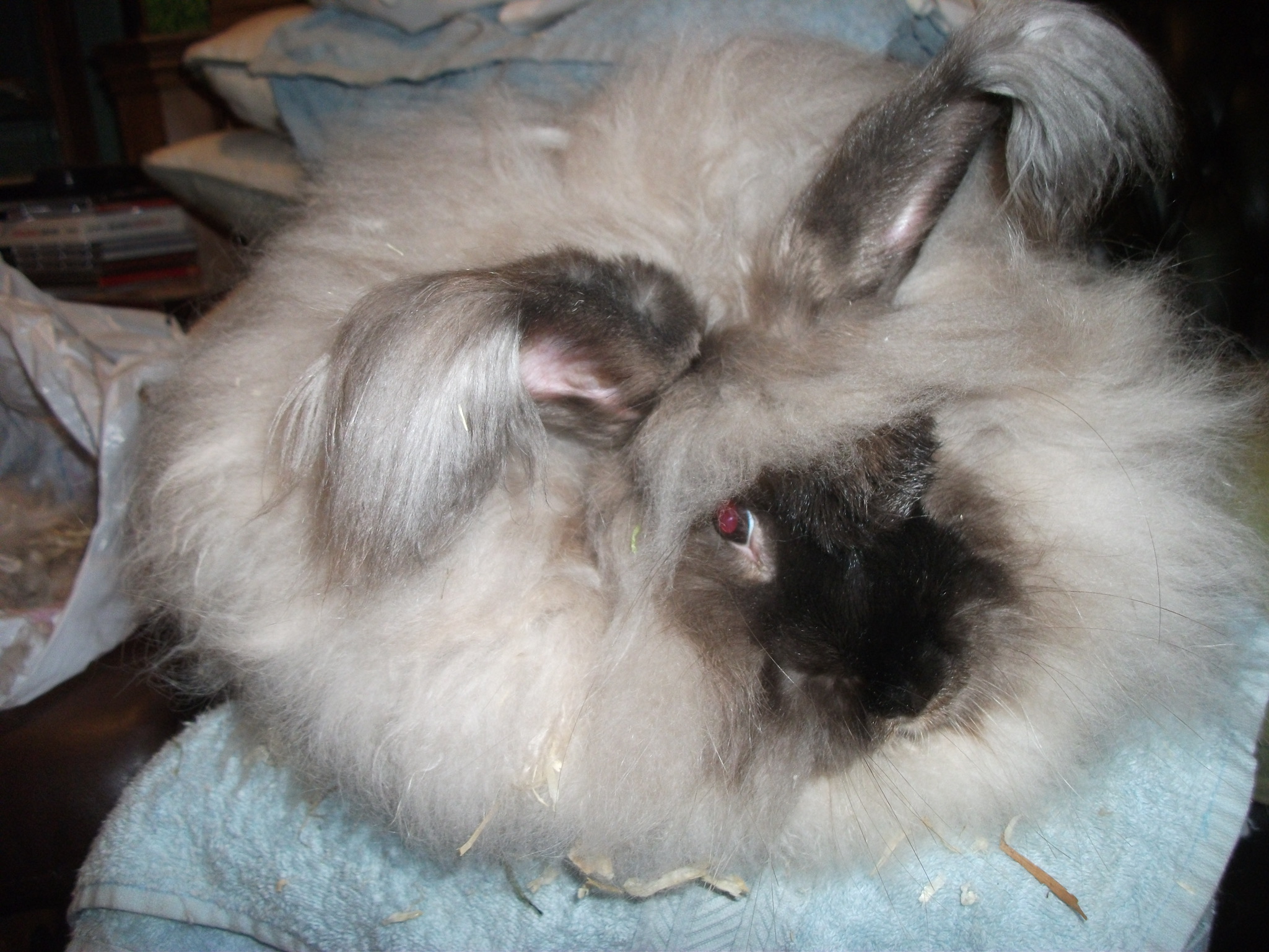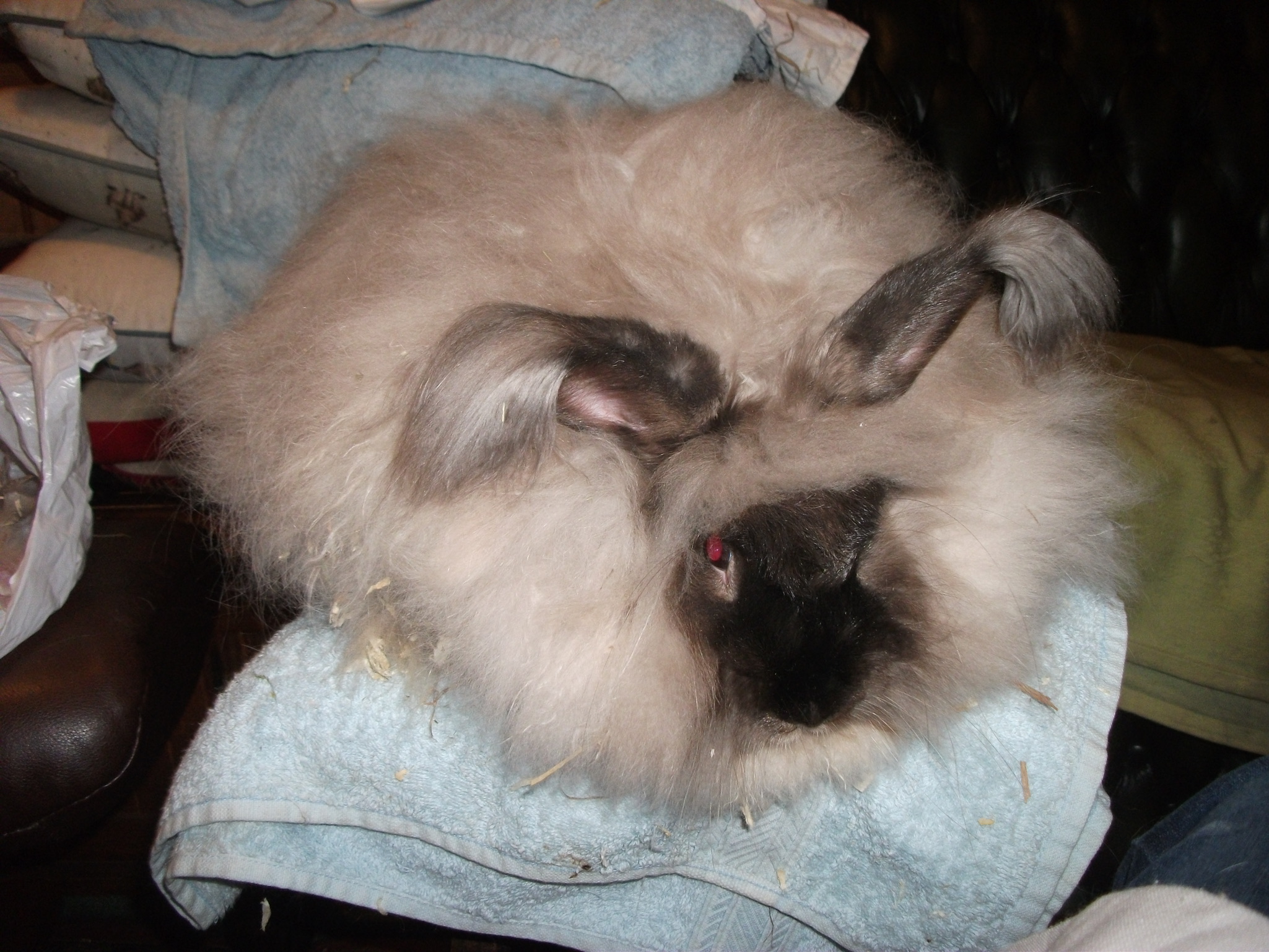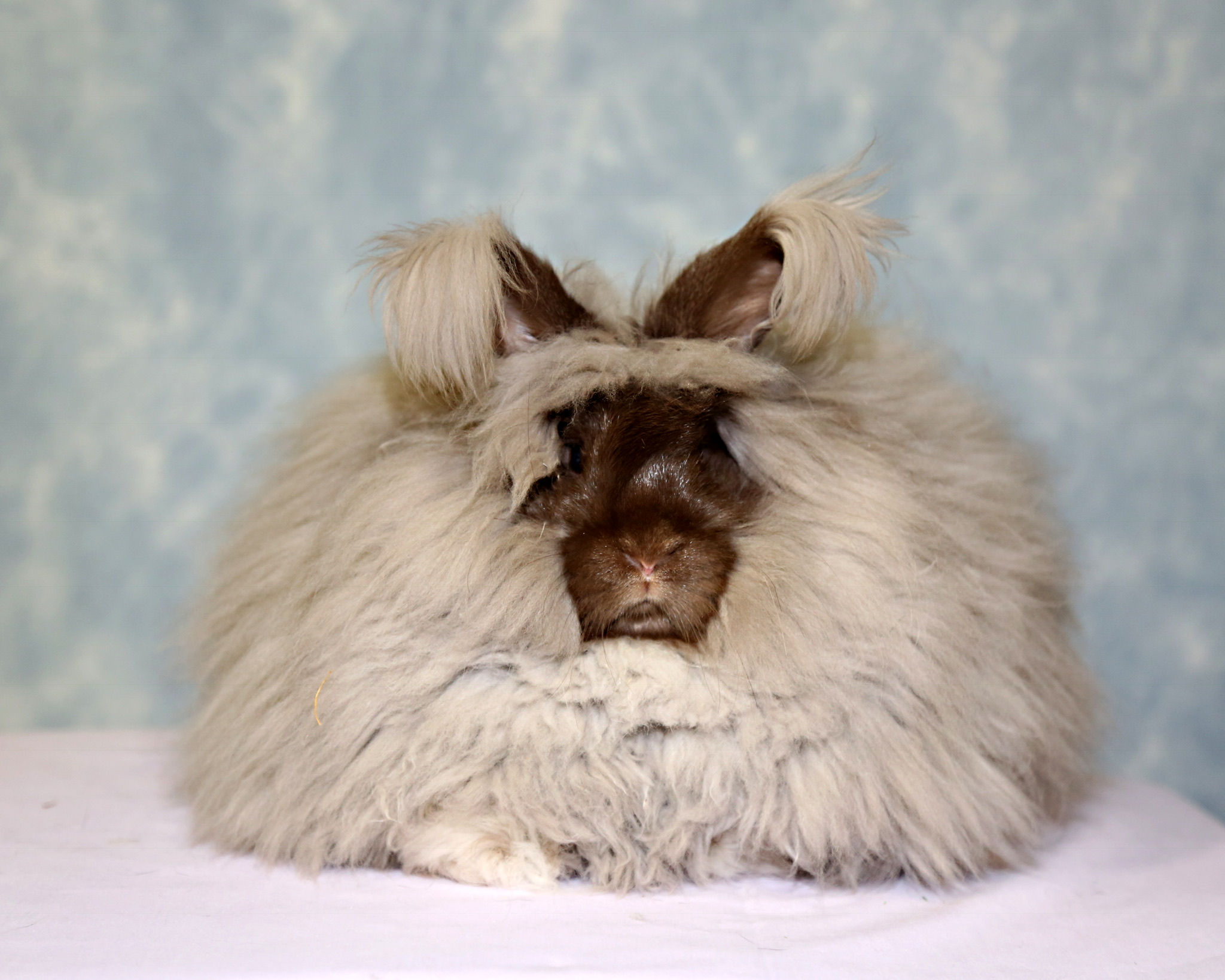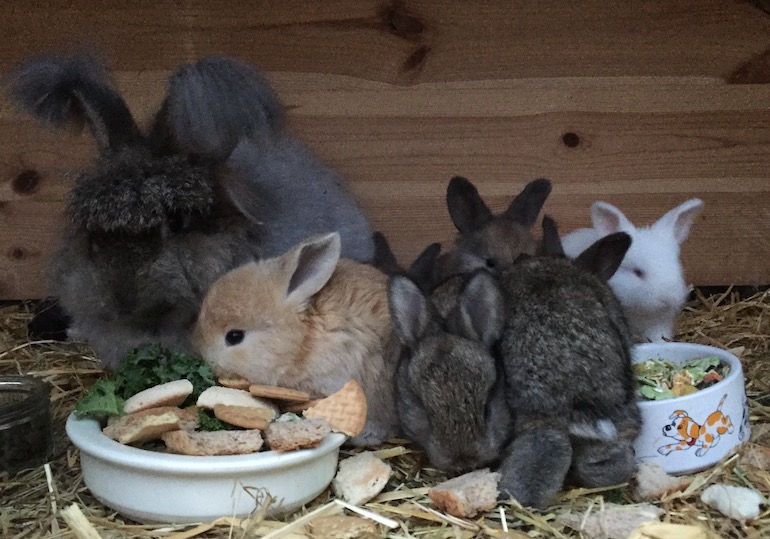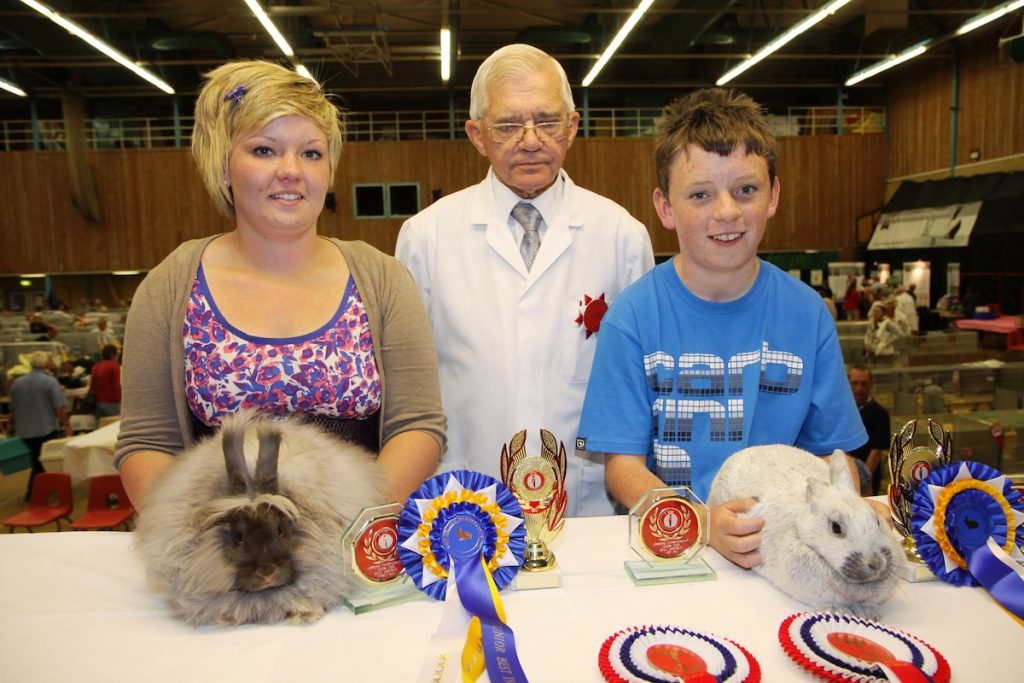
The breed standard of the national club.
Wool Quality
- Texture as silky as possible
- 30 points
Wool Quantity and Length
- Even and full all over, clear to the skin
- 25 points
Front
- Full and prominent on the chest and sides of the neck
- 10 points
Head, Neck and Ears
- Broad short head. Short well woolled and tufted ears
- 10 points
Size and Shape
- Round and snowball like
- Weight at 5 months approximately 5½lbs (2.494kg)
- An adult ideally not to exceed 7½lbs (3.402kg)
- Type and quality always to be taken into account
- 10 points
Feet
- Thickly covered with long wool, well furnished
- 5 points
Condition
- Clean well nourished and well groomed
- 10 points
Total 100 points
Eyes: Ruby, bright and bold
Legs: Straight, heavily woolled
Tail: Large and well woolled
Head: Wide across the nostrils, bold appearance, densely furred, wool to be long and thick between and behind the ears.
Serious Faults: Narrow wedge head, long plain ears, plain feet,matted coat, coarse coat, bad condition, lop ears.
Read More
